TypeScript foundation (expanded)
Angular is built with TypeScript and for TypeScript. That matters. Static types act like guard rails,
catching whole classes of bugs before runtime and doubling as living documentation for your team. Interfaces
shape your data contracts; generics give you precision; enums and discriminated unions express intent; and
strict compiler settings keep drift at bay as codebases grow. Templates are type-checked too, so mismatched
property names and unsafe bindings are flagged during development rather than by your users. The result?
Clearer APIs, safer refactors, faster onboarding and fewer late-night surprises. (Angular Blog)
Concretely, modern Angular (v20) leans on-and encourages-strict settings: strict in TypeScript,
and strictTemplates for template type checking. Combine these with Angular’s standalone components, the
function-based input()/output() APIs and Signals, and you get end-to-end type safety: from HTTP calls,
through services, into components, and across templates. (angular.dev)
Below are small, idiomatic examples using Angular v20.
1) Turn on strictness (TypeScript + Angular compiler)
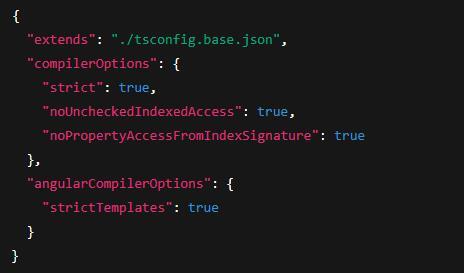
strictTemplates is the Angular setting that type-checks your HTML. It supersedes older flags and helps
surface invalid bindings early. (angular.dev)
2) Strongly typed data contracts and HTTP
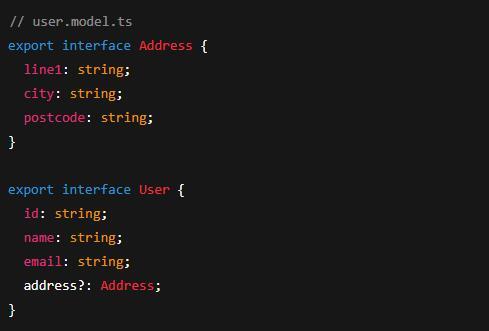
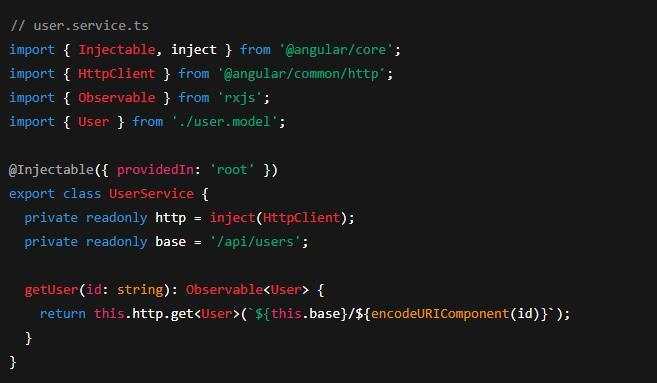
HttpClient is generic-get<User>(...) tells the compiler what shape to expect, so consumers and templates
get proper intellisense and compile-time checks. (Angular Blog)
3) Standalone component with function-based inputs/outputs and Signals
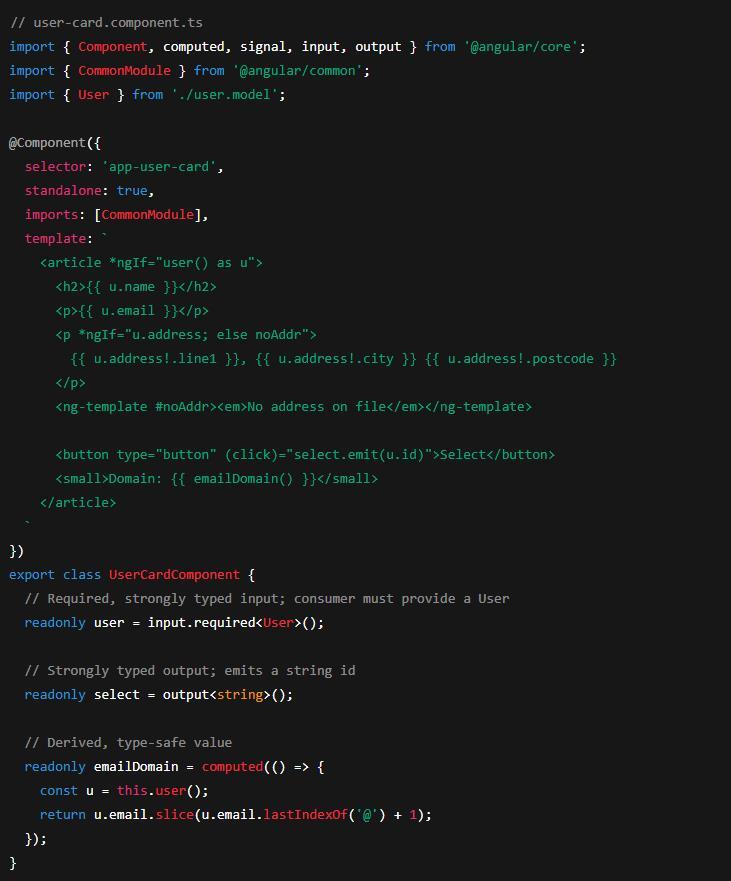
The input.required<User>() API enforces that consumers provide a User. computed() derives values with
full type inference, and templates are checked against the same types. (Angular Blog)
4) Consuming the service with precise types
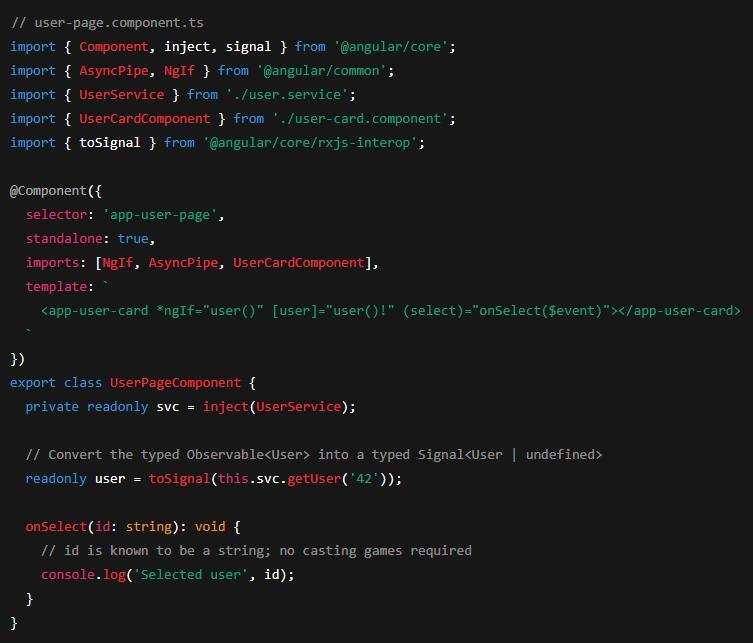
Why this pays off in larger codebases
- Safer refactoring. Rename a field or tighten a type and the compiler lights up every broken usage.
- Template confidence. Invalid bindings, missing properties and unsafe
null access surface at build time. - Clear contracts. DTOs and interfaces make API boundaries explicit across teams and repos.
- Better tooling. Editors leverage types for completions, quick-fixes and inlay hints; CI enforces them.
- Performance via correctness. Fewer runtime checks and defensive code once the types do the heavy lifting.
In short: TypeScript isn’t window dressing in Angular; it’s the spine. Embrace strictness (strict,
strictTemplates), model your data with interfaces and let generics flow through services, components and
templates. You’ll move faster-with fewer surprises-especially as your application and team scale.
Latest stable: Angular v20. (Angular Blog)
References (key facts):
Angular v20 announcement and modern stack; template strictness docs; release cadence/versioning.
(Angular Blog)